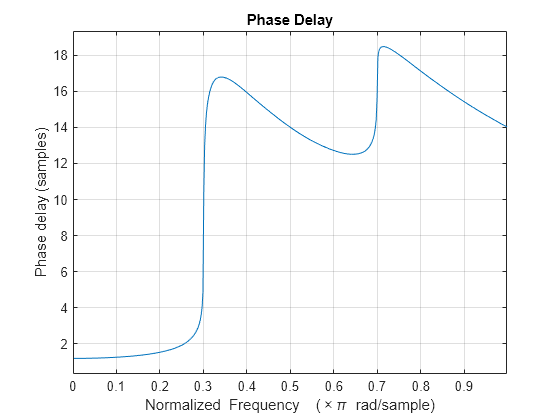phasedelay
デジタル フィルターの位相遅延
構文
説明
[ は、分子係数 phi,w] = phasedelay(B,A,"ctf",n)B と分母係数 A をもつCascaded Transfer Functions (CTF) として表されるデジタル フィルターの n 点位相遅延応答を返します。 (R2024b 以降)
phasedelay(___) を使用すると、位相遅延応答と周波数が対比のためにプロットされます。
例
入力引数
出力引数
詳細
ヒント
アルゴリズム
フィルターの "位相遅延応答" は、入力信号がシステムを通過する際に各周波数成分に生じる時間遅延に対応します。関数 phasedelay では、入力 b および a の分子係数と分母係数を指定した場合、フィルターの位相遅延応答と周波数ベクトルが返されます。
参照
[1] Lyons, Richard G. Understanding Digital Signal Processing. Upper Saddle River, NJ: Prentice Hall, 2004.






